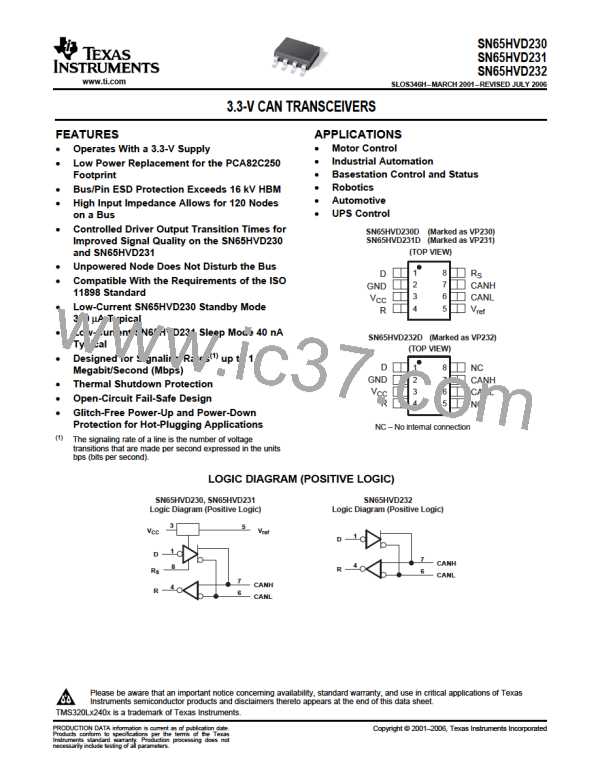SN65HVD230
SN65HVD231
SN65HVD232
www.ti.com
SLOS346H–MARCH 2001–REVISED JULY 2006
APPLICATION INFORMATION (continued)
10-kΩ resistor, and ≈ 500 ns with a 100-kΩ resistor. Therefore, considering that the rule-of-thumb propagation
delay of typical bus cable is 5 ns/m, slope control with the 100-kΩ resistor decreases the allowable bus length
by the difference between the 500-ns max loop delay and the loop delay with no slope control, 70.7 ns. This
equates to (500-70.7 ns)/5 ns, or approximately 86 m less bus length. This slew-rate/bus length trade-off to
reduce electromagnetic interference to adjoining circuits from the bus can also be solved with a quality shielded
bus cable.
(
)
Figure 39. 70.7-ns Loop Delay Through the HVD230 With RS = 0
INTEROPERABILITY WITH 5-V CAN SYSTEMS
It is essential that the 3.3-V HVD230 family performs seamlessly with 5-V transceivers because of the large
number of 5-V devices installed. Figure 40 displays a test bus of a 3.3-V node with the HVD230, and three 5-V
nodes: one for each of TI's SN65LBC031 and UC5350 transceivers, and one using a competitor X250
transceiver.
23
Submit Documentation Feedback

 TI [ TEXAS INSTRUMENTS ]
TI [ TEXAS INSTRUMENTS ]